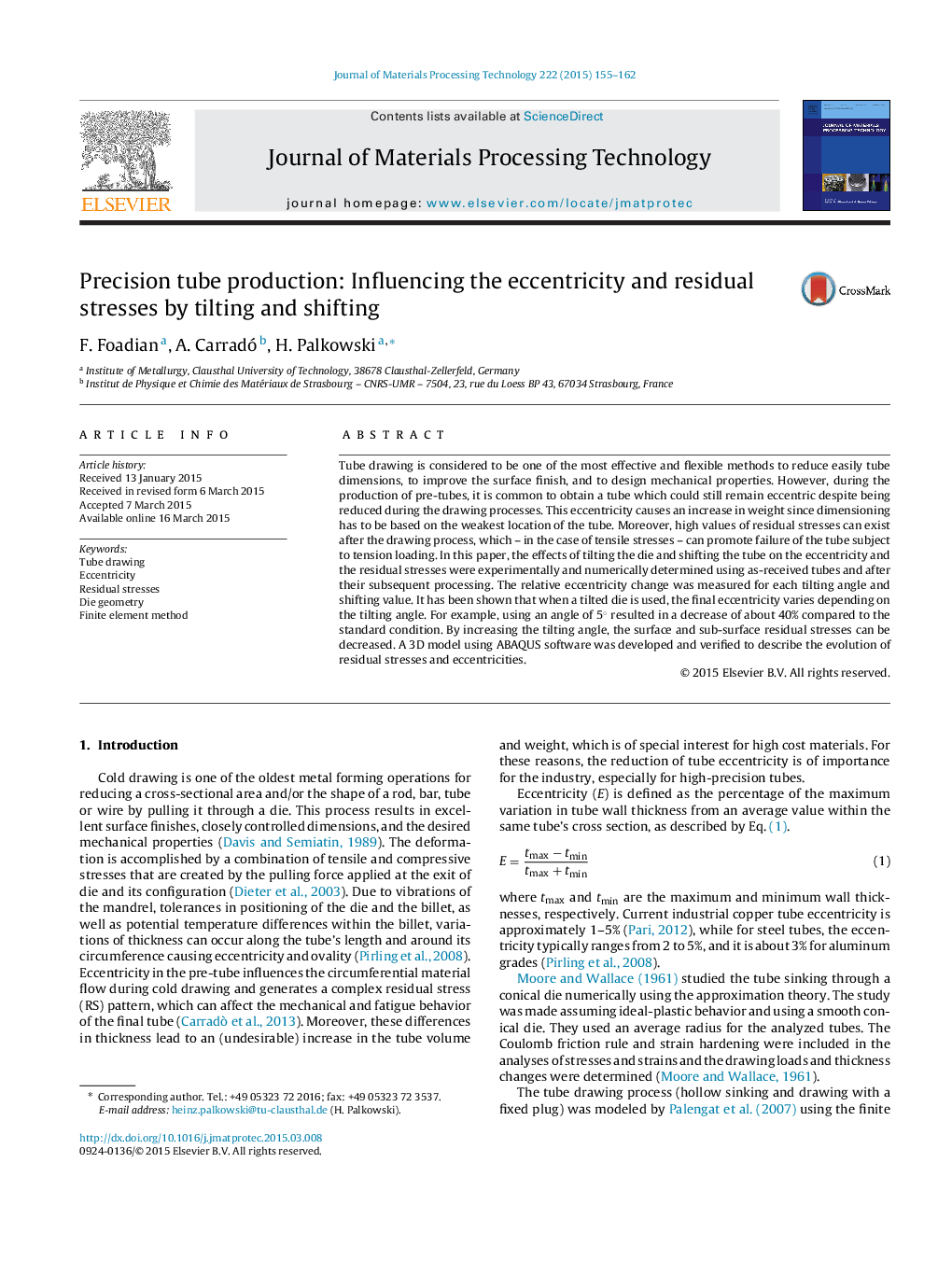| Article ID | Journal | Published Year | Pages | File Type |
|---|---|---|---|---|
| 7177058 | Journal of Materials Processing Technology | 2015 | 8 Pages |
Abstract
Tube drawing is considered to be one of the most effective and flexible methods to reduce easily tube dimensions, to improve the surface finish, and to design mechanical properties. However, during the production of pre-tubes, it is common to obtain a tube which could still remain eccentric despite being reduced during the drawing processes. This eccentricity causes an increase in weight since dimensioning has to be based on the weakest location of the tube. Moreover, high values of residual stresses can exist after the drawing process, which - in the case of tensile stresses - can promote failure of the tube subject to tension loading. In this paper, the effects of tilting the die and shifting the tube on the eccentricity and the residual stresses were experimentally and numerically determined using as-received tubes and after their subsequent processing. The relative eccentricity change was measured for each tilting angle and shifting value. It has been shown that when a tilted die is used, the final eccentricity varies depending on the tilting angle. For example, using an angle of 5° resulted in a decrease of about 40% compared to the standard condition. By increasing the tilting angle, the surface and sub-surface residual stresses can be decreased. A 3D model using ABAQUS software was developed and verified to describe the evolution of residual stresses and eccentricities.
Related Topics
Physical Sciences and Engineering
Engineering
Industrial and Manufacturing Engineering
Authors
F. Foadian, A. Carradó, H. Palkowski,
